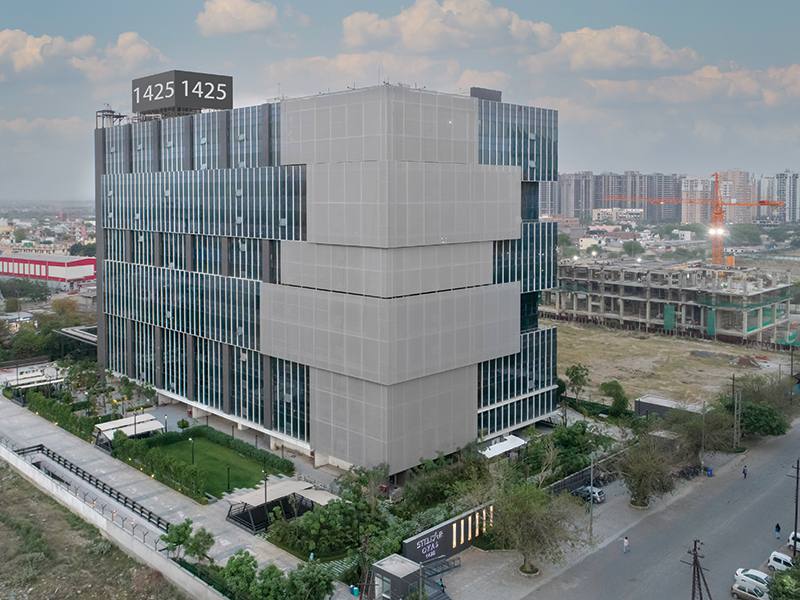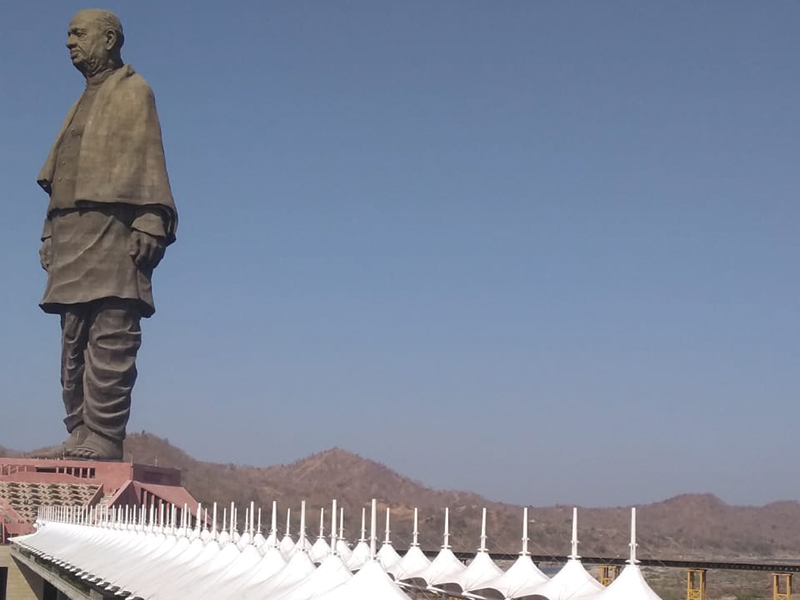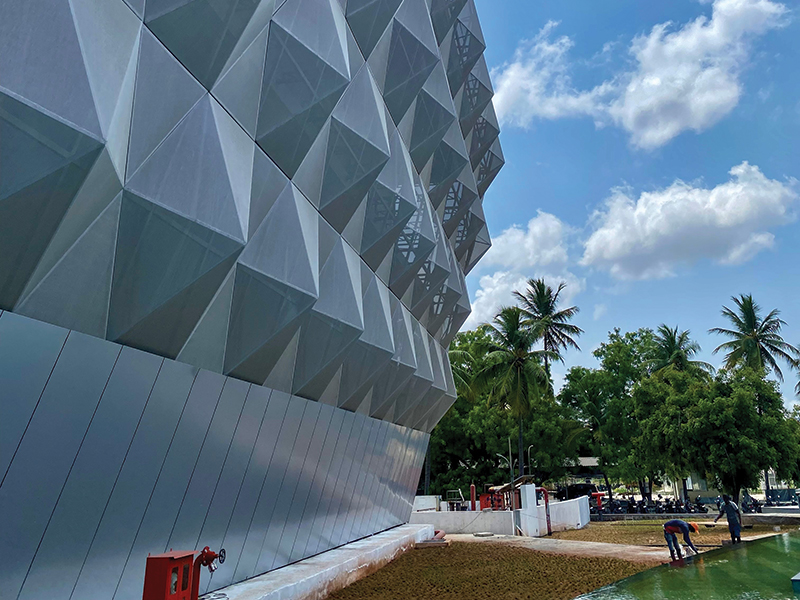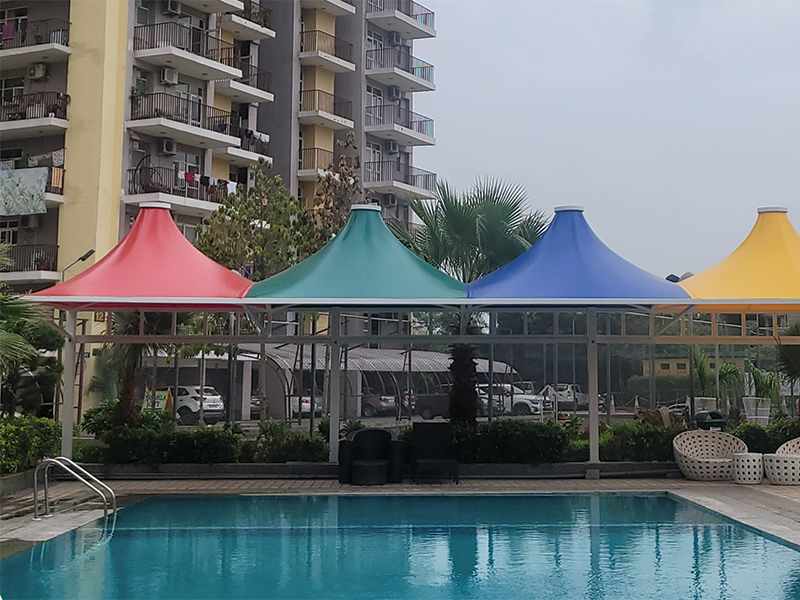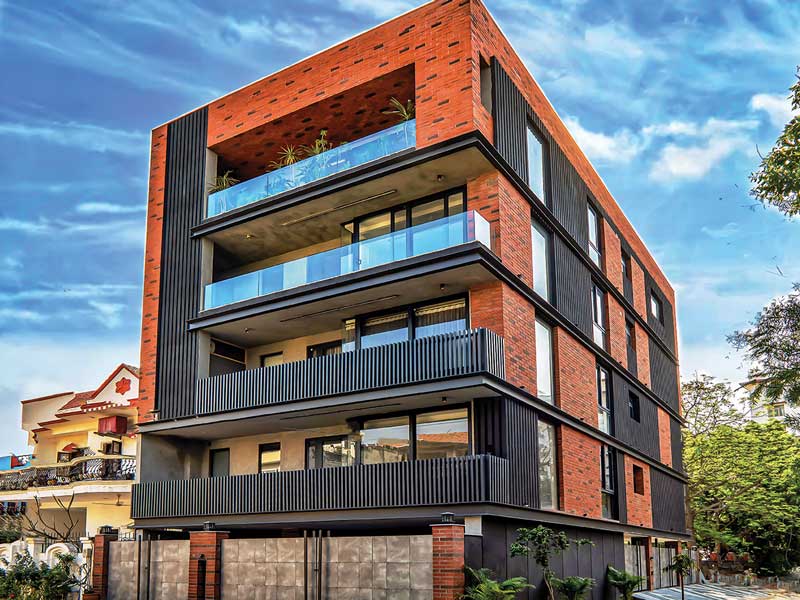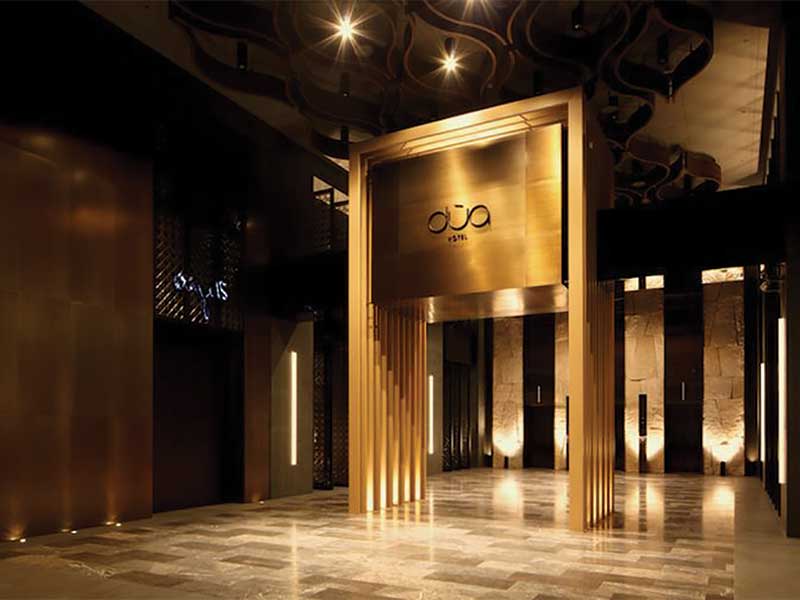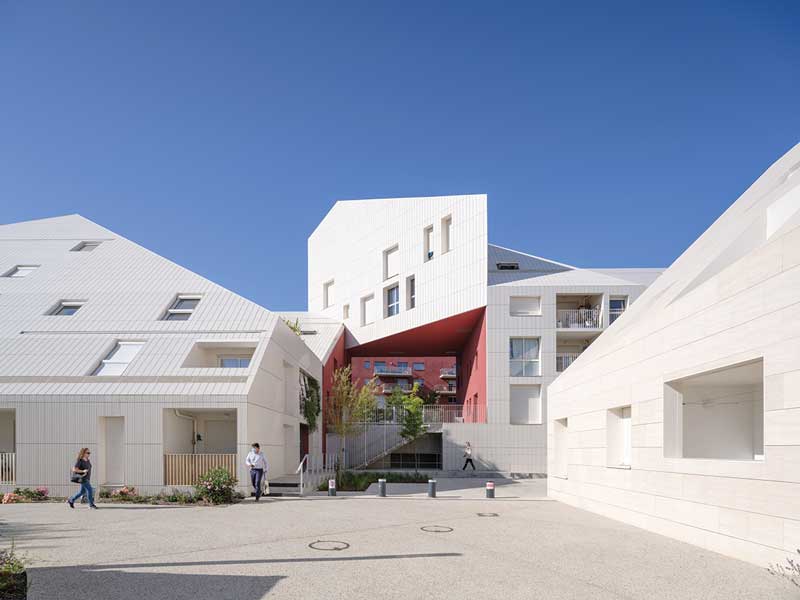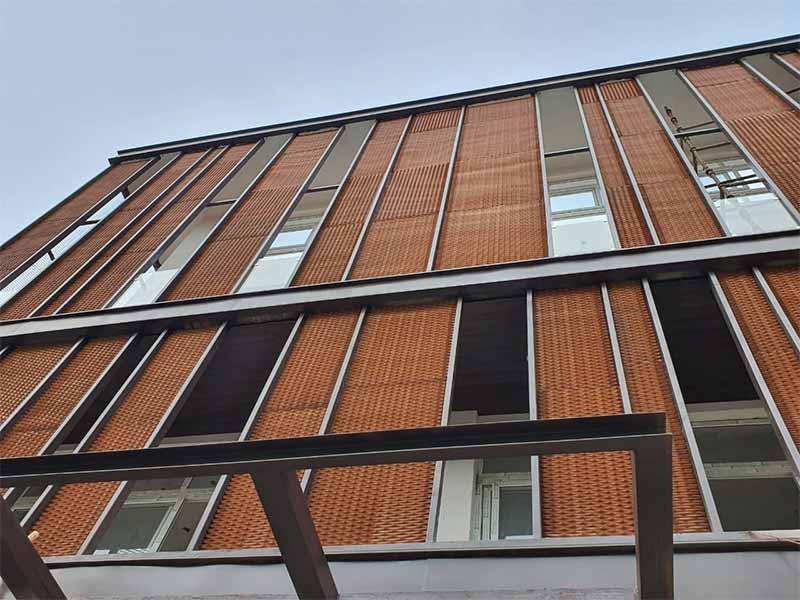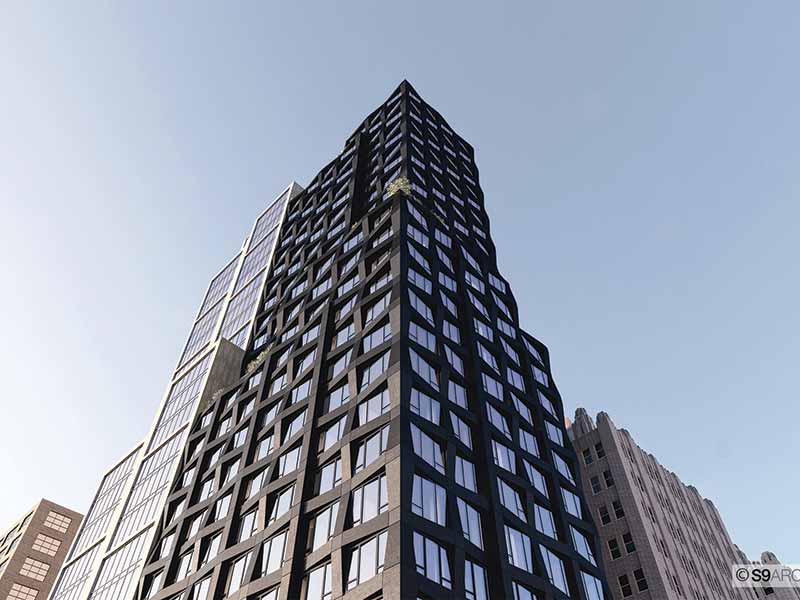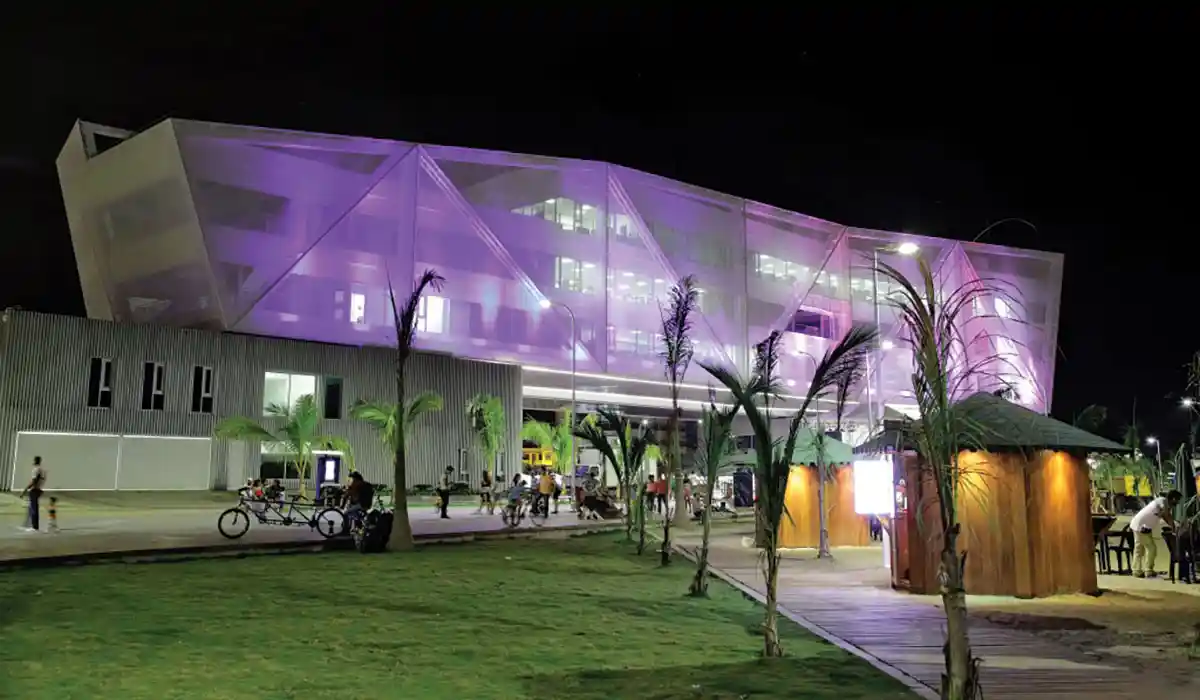
The VALMEX® façade product range is meant for new buildings or for renewing façades. It offers numerous design options with different perforations and colours. From hard and sharp edges to smooth and sculptural curvatures, these meshes are made for long lasting cladding applications. Their resistance, durability, and permeability are the key characteristics throughout the development process. These lightweight but high strength meshes recreate weightless and natural forms and generate innovative and eye-catching architecture. The meshes are breathable, block UV rays, and reduce solar heat gain.
In most cases, fabric façades are used as curtain wall facing with air space, providing for a clever way of spreading the light. In fact, the sun-shading effect is the most important function of fabric façades. Here again, adaptivity is limited to making whole parts of the façade move, hence, it is the structural system which reacts to climatic alterations rather than the fabric itself.
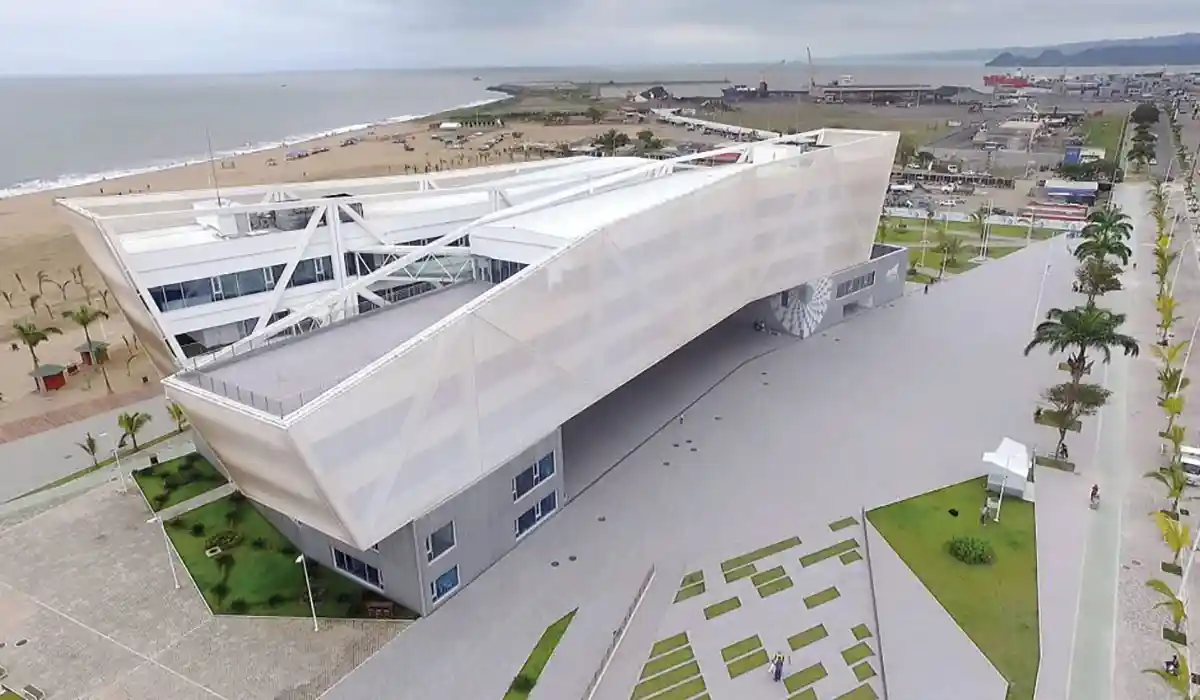 Office building in Esmeraldas, Ecuador
Office building in Esmeraldas, EcuadorIn a fabric façade of an office building in Esmeraldas, Ecuador, the sun radiation is extremely high and as the office spaces are only used during the day, here the constant sun shading effect of the fabric façade is absolutely beneficial for the Indoor Environmental Quality.
This shows another advantage of fabric façades: the location of the offices, directly on the beach of the Pacific Ocean, would make it almost impossible to open windows individually if there was not the sun- and (simultaneously) a wind-shielding screen in front of the climatic façade.
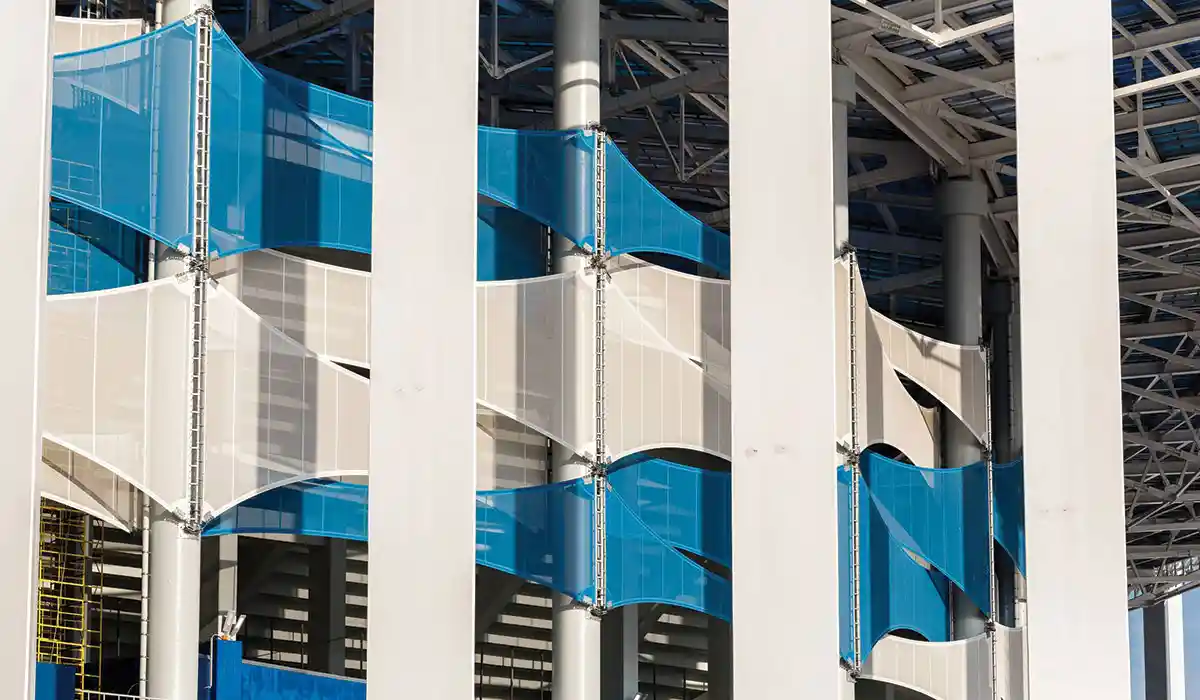
There is yet a third property which underlines the multi-functionality of fabric façades – while the people working in the offices can easily look through the fabric from inside, it is almost impossible to peek through from outside. At night this function is reversed: if the inner spaces are lit, the open area within the fabric mesh becomes more evident than the woven material itself, and therefore allows outsiders to look into the building.
Textile façade materials mainly consist of fabric meshes, that is, grids or scrims. When used (for example) for stadia façades where wind tunnel testing is essential within building permission processes, it is very difficult to simulate the fabric’s open area. While the 1:1 mesh consists of around 70% material and 30% open area, it is almost impossible to scale down the open area - and mostly its effect on wind movements - scaled down to 1:200.
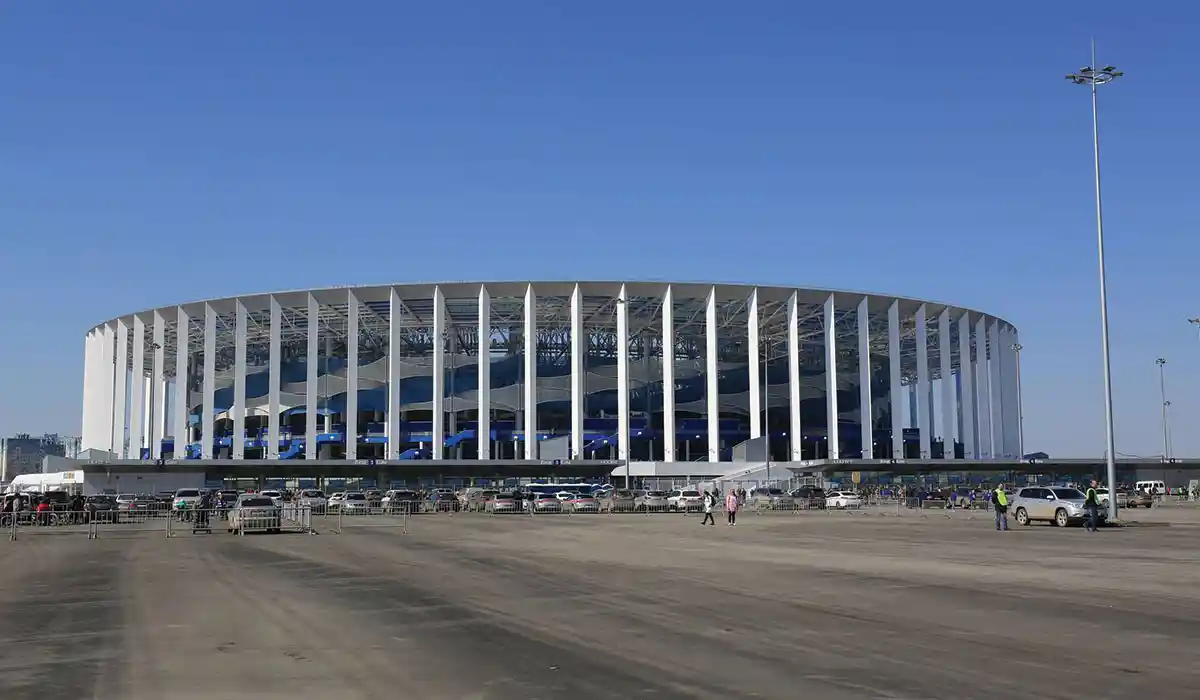 Nizhny Novgorod Stadium
Nizhny Novgorod StadiumThe design of the façade in Nizhny Novgorod Stadium creates analogies with the theme of water that is a dominant feature in the city. Behind the colonnade that surrounds the building, a tensile cable structure holds blue and white membrane panels of irregular forms. The mesh membrane for these important design features was produced in Germany by Mehler Texnologies GmbH. The mesh that was used for the stadium’s façade in Nizhny Novgorod is Valmex TF 400, with an open area of 30%. It serves for the wave-look in blue and white from the outside and at the same time gives an airy impression when seen from the grandstand’s perspective in the inside. Mehler Texnologies coated a specific blue, which not only corresponds to the architect’s idea of conveying the water image within the façade, but it also matches the colour of the club that will use the stadium in the future.
